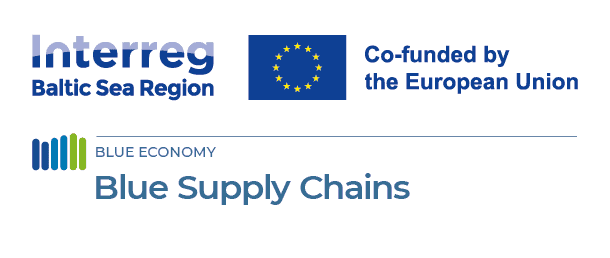
Greening Port Operations - Retrofitting of Rubber Tyred Gantry Cranes (RTGs)
03 July 2024
Retrofitting of Rubber Tyred Gantry Cranes (RTGs)
A feasibility study in cooperation with the Gdynia Container Terminal.
From an environmental standpoint, electrifying port handling equipment eliminates local exhaust emissions associated with internal combustion drives, particularly diesel engines. While complete reliance on electric drives powered entirely by renewable sources is a goal, many countries are gradually shifting their electricity mix toward renewable energy. Additionally, the electrification of port facilities contributes to a significant reduction in noise and vibration associated with diesel engines.
Moreover, electrification opens avenues for electricity storage in ports, transforming them into multifaceted economic facilities that go beyond cargo handling. This shift aligns with the green port policy.
RTGs are specialized equipment used in port and terminal operations for handling shipping containers. These cranes are known for their mobility and adaptability, playing a crucial role in efficiently stacking, transporting, and loading or unloading shipping containers. RTGs are designed to move on rubber tires, allowing them to navigate easily within the terminal area. At the same time they are one of the main CO2 polluting sources, if operated by diesel engines. Retrofitting RTGs for electrical power supply addresses this challenge. By replacing diesel-powered engines with electrically powered ones, several benefits can be achieved.
Benefits of Retrofitting RTGs
- Emission Reduction: Electrically powered RTGs eliminate direct emissions from diesel com-bustion, contributing to a significant reduction in carbon dioxide and other pollutants associated with traditional RTGs.
- Noise Reduction: Electric motors generally produce less noise compared to diesel engines, contributing to a reduction in noise pollution in and around the port area.
- Energy Efficiency: Electric RTGs can be more energy-efficient, especially if the electricity is sourced from renewable energy, leading to lower operational costs and a smaller environmental footprint.
- Local Air Quality Improvement: The shift to electric power helps improve local air quality, creating a healthier environment for both terminal workers and nearby residents.
- Compliance with Green Initiatives: Many ports are increasingly adopting green and sustain-able practices. Retrofitting RTGs for electric power aligns with these initiatives, contributing to the overall sustainability of port operations.
In summary, the retrofitting of RTG cranes for electric power supply is a solution aimed at mitigating the environmental impact of traditional diesel-powered RTGs, making container terminal operations more sustainable and environmentally friendly
Factors influencing the decision to retrofit or purchase new electric RTGs
While the current trend leans toward purchasing new eRTGs, the decision-making process is multifaceted and depends on the specific circumstances, goals, and constraints of each terminal. Advances in technology, changing regulatory landscapes, and the pursuit of sustainability are likely to shape the future of electrified container handling equipment in ports worldwide.
However, currently, more than 400 RTGs powered by diesel engines are in operation in Baltic Sea Region ports and inland combined terminals. Retrofitting of existing RTGs, even if in a limited extend, may have an important impact on the process of electrification operations by optimized financial resources.
- Costs:
Retrofit (+): Retrofitting existing cranes can potentially be more cost-effective than purchasing entirely new equipment.
Purchase (-): New equipment often comes with higher upfront costs. - Technology Compatibility:
Retrofit (-): Some older RTGs might not be easily adaptable to electric power, and the retrofitting process might be complex.
Purchase (+): New eRTGs are designed from the ground up to be electrically powered, ensuring seamless integration. - Operational Efficiency:
Retrofit (-): Retrofitting might not always achieve the same level of efficiency as purpose-built electric cranes.
Purchase (+): New eRTGs can be optimized for electric power, potentially offering better effi-ciency and performance. - Environmental Impact:
Retrofit (0/+): While retrofitting reduces the environmental impact compared to traditional diesel-powered RTGs, it might not be as efficient as purpose-built electric cranes.
Purchase (+): New eRTGs are designed with the latest environmental standards in mind, providing cleaner and more sustainable operations. - Technological Advancements:
Retrofit (0): Retrofitting might not incorporate the latest technological advancements in electric crane design.
Purchase (+): New eRTGs can benefit from the latest technologies, including automation and remote-control features. - Timeline:
Retrofit (-): Retrofitting can take time and may lead to operational downtime.
Purchase (+): Purchasing new eRTGs provides a faster transition to cleaner operations. - Regulatory Compliance:
Retrofit (0/+): Retrofitting can bring existing equipment in line with new environmental regulations.
Purchase (+): New eRTGs are likely to meet or exceed the latest regulatory standards. - Long-Term Viability:
Retrofit (0/+): Depending on the retrofitting process, the long-term viability of the modified equipment might be a consideration.
Purchase (+): New eRTGs are designed for long-term use and can be part of a more sustainable and future-proof strategy.
Efficiency analysis and feasibility study
Technical solution
The chosen model for electrification is the 41-tonne capacity E-One2 Zero Emission RTG, designed to stack 6+1 wide and 1-over-6 high. The decision to transition to electric RTGs aligns with GCT’s dedication to environmental responsibility and zero-emission operations. The successful development of electric RTG cranes at GCT has been facilitated by the reconstruction of the terminal, providing essential infrastructure enhancements in terms of connection capacities, voltage levels, and connection points. The upgraded equipment will operate on a 15 kV power supply.
For the new power supply system, GCT plans to implement a classic solution involving a cable reel system with a drive mechanism and control. This modernization initiative is expected to result in a significant reduction in CO2 emissions generated by handling operations, with investor estimates suggesting a potential decrease of up to 45%. The anticipated reduction in GCT’s scope 1 direct CO2 emissions is estimated to be around 1,700 tonnes per year, highlighting the environmental impact of the planned yard crane modernization.
While the reduction in solid fuel combustion carries significant reductions in carbon dioxide emissions, which are the most tracked emissions indicator, significant reductions in nitrogen oxides, hydrocarbons, carbon monoxide, or particulate matter are also achieved through electrification.
Optional elements of RTG electric drives that enhance operational efficiency and are feasible with RTG electrification include:
- Battery Pack: An additional battery pack, acting as a power bank, serves as mobile energy storage. It provides emergency power in situations where access to electricity from a cable-powered source is temporarily limited. This is crucial for maintaining crane operability in emergency or service modes, ensuring mobility beyond the existing cable infrastructure range, and addressing other non-standard situations.
- Recuperation (Energy Recovery): This feature allows the recovery of energy during container lowering operations. Energy recovery involves converting kinetic energy from the container’s move-ment into electrical energy through electrodynamic braking. The recovered energy can be stored in an external battery or used directly to power crane operations.
- Semi-Automated Control System: Retrofitting an overhead crane enables the installation of a semi-automatic control system. This contributes to reducing operating costs while enhancing com-fort and efficiency in crane operations.
- Full Automated (and Remote) Control System: Achieving complete automation involves imple-menting a comprehensive remote management process and altering terminal yard management procedures. This opens opportunities to maximize cost-effectiveness and operational efficiency.
- Technical Monitoring: Continuous monitoring of equipment performance and status in a remote form, coupled with a system for transmitting information about the load and equipment, enables data management by operators. The collected data can be further analyzed for optimizing technological processes.
- Integration into TOS (Terminal Operation System): Implementing RTG electrification can involve integration into the Terminal Operation System, contributing to overall terminal automation. This integration streamlines processes and enhances coordination within the terminal.
Analyses on the economic feasibility of RTG electrification process
The feasibility study considers two alternative scenarios for the existing RTG equipment at the Gdynia Container Terminal.
The first alternative (V0) is the baseline scenario, which considers the continuous operation of the ex-isting RTGs without electrification. This scenario includes the replacement of the seven RTGs with new electric RTGs after their lifespan ends, which is assumed to be ten years from the base year (2024). Consequently, the entire fleet will be replaced in 2034.
The second alternative (V1) is the scenario that assumes investment in the retrofitting and electrification of the seven existing RTGs according to a set schedule. This scenario plans for continuous electrification starting from the third quarter of 2025, with the entire fleet being electrified by the first quarter of 2027.
Both scenarios differ significantly in terms of operational costs and external economic impact, particularly regarding carbon emissions. The carbon emissions have been priced according to the Blue Book published by the European Commission, which sets the cost of 1 ton of CO2 at €165.
CAPEX and OPEX costs have been considered besides other determinants, such as NPV, FNPV, FRR, Cash Flow, etc.
The CAPEX sheet details the initial investments required for the retrofitting project. The OPEX sheet provides detailed information on the operational expenditures (OPEX) for two scenarios, labeled V0 and V1, over a multi-year period from 2024 to 2046.
For the base scenario (V0), which assumes the continuous operation of existing RTGs without electrifi-cation, the operational costs are broken down into various categories such as depreciation, and costs of materials and energy—primarily the source of power. The costs of materials and energy in 2024 are estimated at €884,474.71 for the V0 scenario, based on the cost of fuel consumed by RTGs. Starting from 2034, the fuel consumption will switch to electricity due to the replacement and purchase of seven new electric RTGs. The assumed consumption of diesel powered RTG is 14.16 liters per hour, as re-ported by GCT.
In the second scenario (V1), which assumes the retrofitting and electrification of RTGs, the operational costs are detailed similarly across the same categories and time frame as for V0. Starting from 2027, which is the first year of operation of seven electric RTGs, the cost of power is 50% lower compared to V0 (diesel fuel-powered). This cost relation continues until 2034 when the operational costs become the same for both scenarios. The assumed consumption of electricity by eRTG is 45 kWh per hour, as reported by Konecranes for a medium capacity loaded crane (15 containers per hour).
The key conclusion from the OPEX sheet is the significant difference in operational costs between the two scenarios. Between the years 2025 and 2033, the savings from the energy source due to earlier electrification amount to more than €4.4 million.
Result
The economic feasibility study compared two scenarios: one with no retrofitting and another assuming the electrification of 7 Rubber Tired Gantry Cranes in the Port of Gdynia. The findings indicate a positive ENPV of 10,938,714.03 EUR for the retrofitting scenario (V1), suggesting that the project is expected to generate significant economic benefits, making it a viable and attractive investment. This positive out-come is influenced by the inclusion of various factors in the calculations, including operational savings and environmental benefits, which collectively enhance the economic appeal of the investment.
It’s important to note that these findings are specific to this individual case and based on certain general assumptions, as the detailed investment cost is not yet fully known. While similar positive effects of retrofitting could be anticipated in other small and medium-sized European ports, an individual approach is necessary to assess feasibility in each case.
The positive ENPV reflects the combined impact of operational savings, environmental benefits, and broader economic gains. Despite the high initial costs, the study confirms that substantial long-term savings and benefits make the retrofitting project economically feasible.
The efficiency analyses and feasibility study convinced the Gdynia Container Terminal operator to retrofit its RTGs in 2025/2026.





